Follow these steps to create a recommendation strategy with a recommendation type that draws on data from a market.
- Click COMPONENTS in the top navigation bar, select Product Recommendations, and then click the Recommendation Strategies tab on the Recommendations page.

- Click CREATE RECOMMENDATION STRATEGY.

- Select the option on the Recommendation Permission modal to make the strategy either global or local, and then click CONTINUE. For more information about how global and local settings work within strategies, see Global and Local Recommendation Strategies.
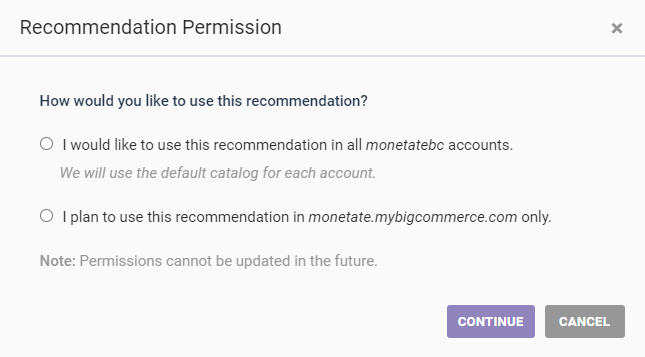
- Name the strategy. Click the placeholder title, type the name into the text field, and then click the green checkmark.
- If you're creating a local strategy and if the account has multiple product catalogs, then select one from Product Catalog.

-
Select one of the following options from Recommendation Algorithm:
- Top Selling by Purchase Count — Populates with products from the catalog with the highest purchase quantity; eligible for geographic targeting
- Top Selling by Gross Revenue — Populates with products from the catalog with the highest gross revenue; eligible for geographic targeting
- Most Viewed (Product Detail Page) — Populates with products from the catalog with the most product detail page views
- Purchased and Also Purchased — Populates with products from the recommendation strategy's selected product catalog that other customers most frequently purchased along with the product(s) that meet the criteria that you select from Base Recommendation on when configuring the recommendation strategy
- Viewed and Also Viewed — Populates with products from the recommendation strategy's selected product catalog most frequently viewed after viewing the product(s) that meet the criteria that you select from Base Recommendation on when configuring the recommendation strategy
- Trending Items by Purchase Count — Populates with products that sold the most in the last 7 days compared to the 30 days prior; premium option
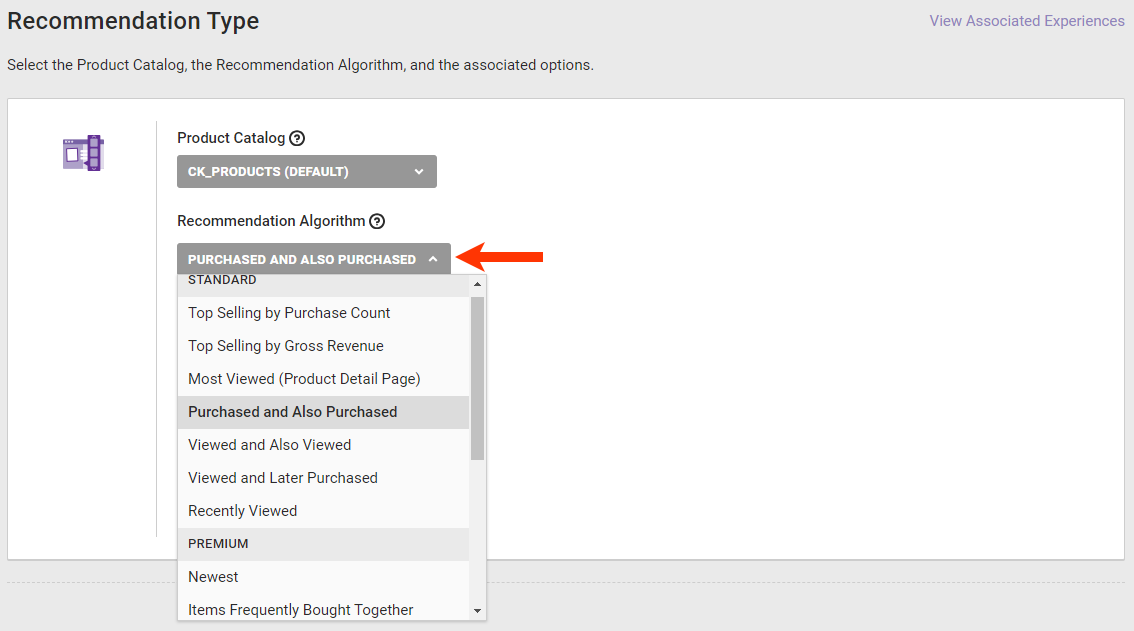
- Select Specific Market from Data comes from.
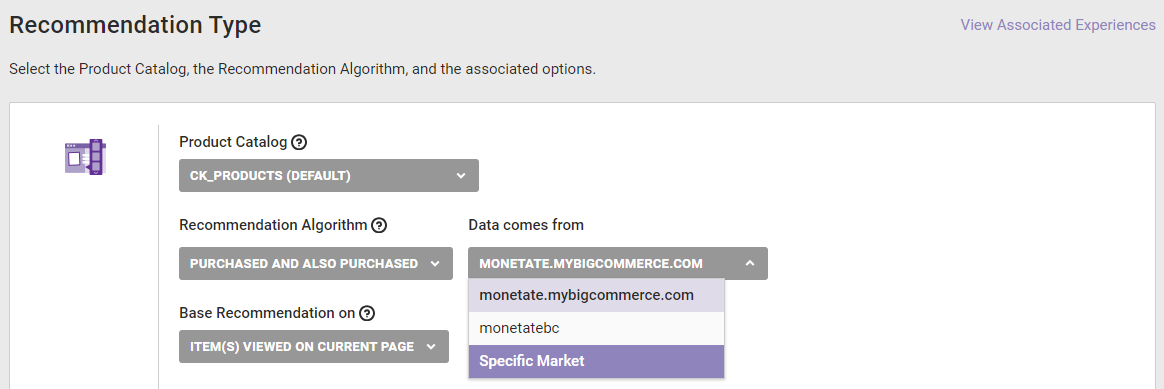
- Choose an option from Select a Market.
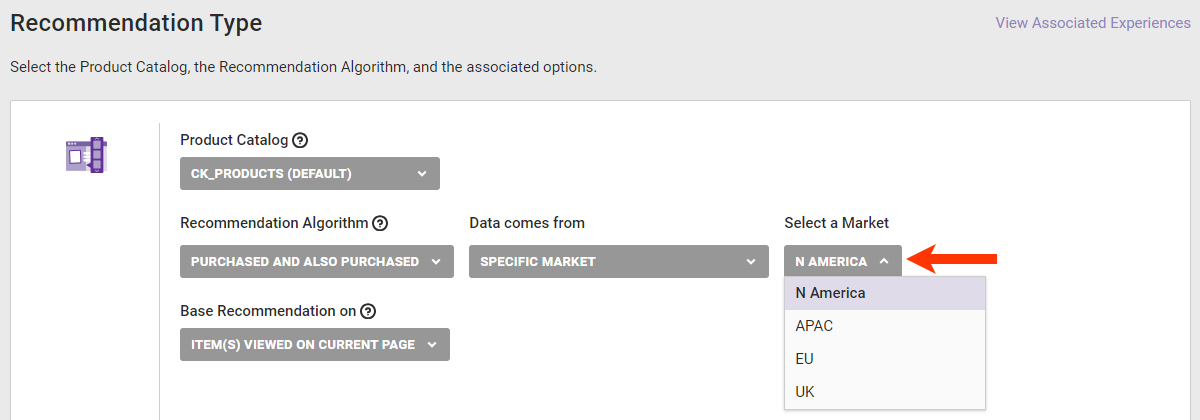
-
If you selected Purchased and Also Purchased or Viewed and Also Viewed in step 6, then select from Base Recommendation on the type of customer behavior or other context on which to base the recommendations.
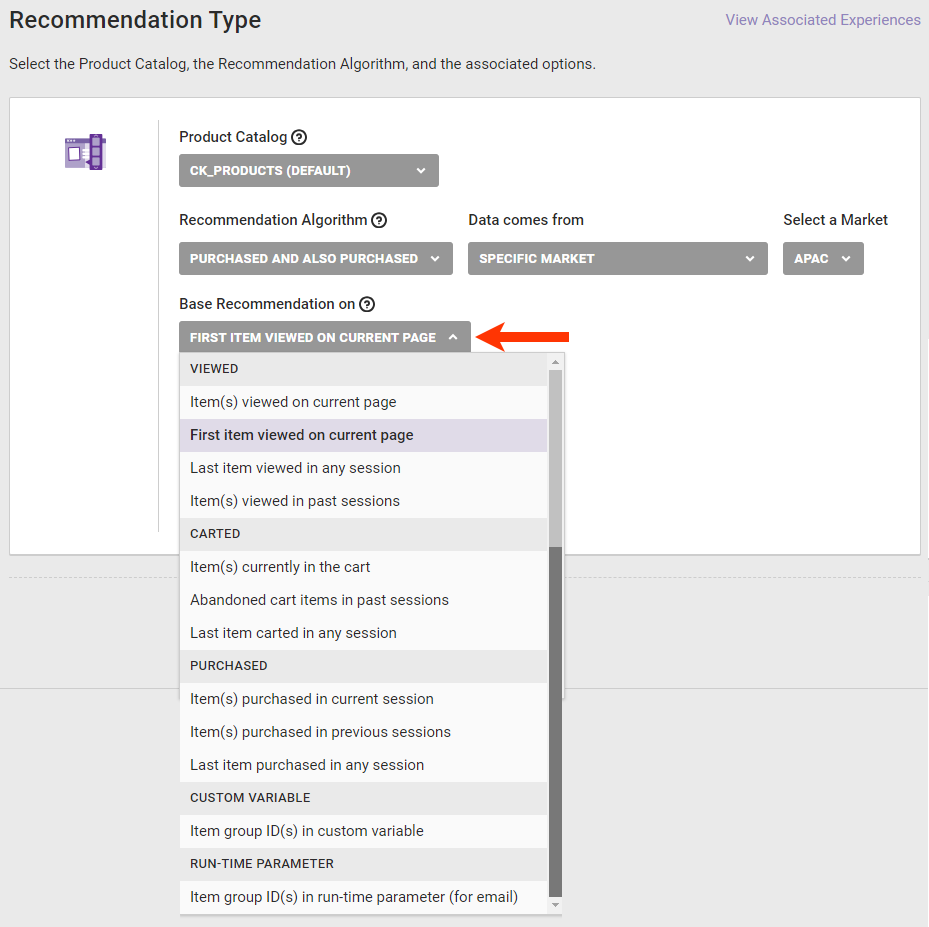
-
If you selected Purchased and Also Purchased or Viewed and Also Viewed in step 6, then optionally toggle Prepend context item in recommendation to YES if you want the product on which the recommendation results are based to appear at the beginning of the recommendation results.
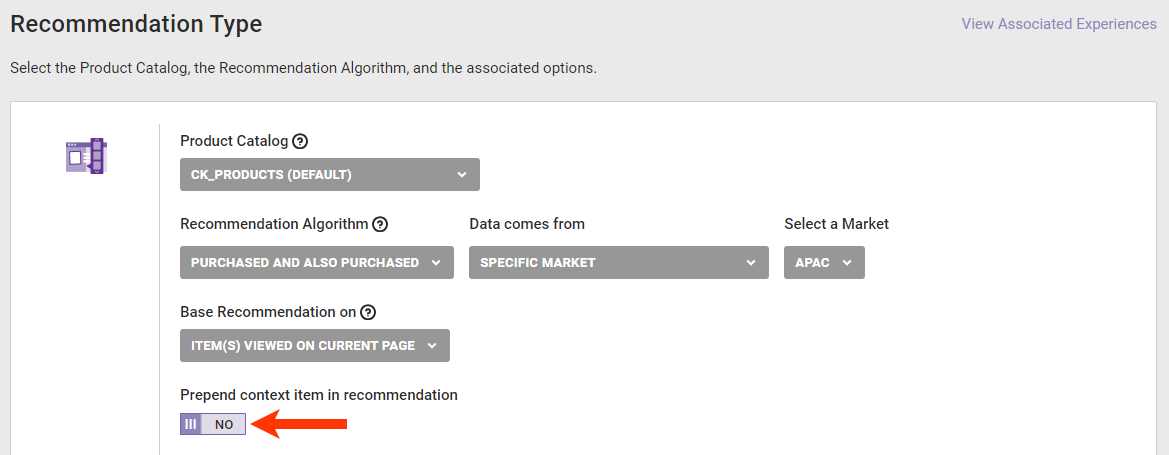
- If you selected Item group ID(s) in custom variable in step 9, then type into Custom Variable a custom variable that your site passes to Monetate using either the
setCustomVariablesmethod call in the Monetate JavaScript API implementation ormonetate:context:CustomVariablesin the Engine API implementation.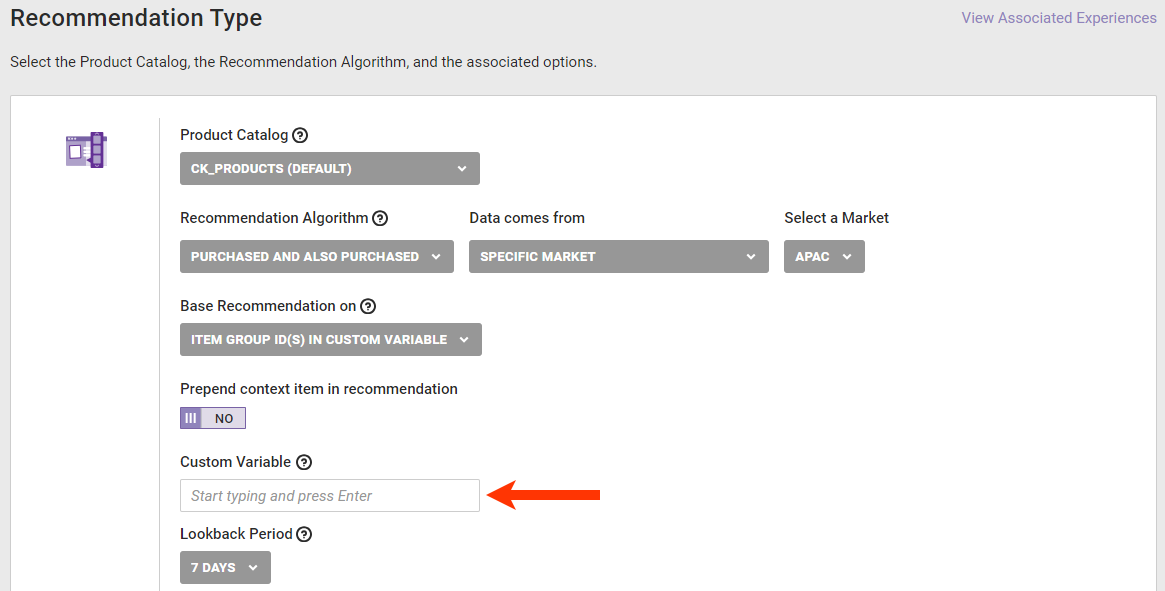
- Select an option from Lookback Period if you selected a recommendation type that requires a timeframe from which to collect historical data.
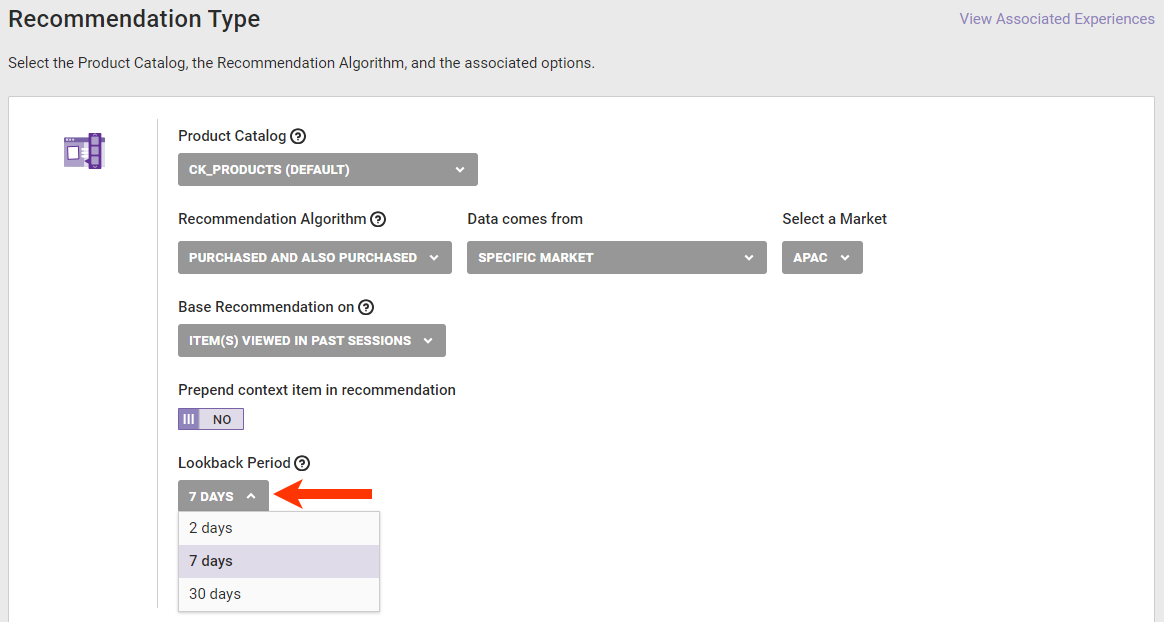
- If you selected Top Selling by Purchase Count, Top Selling by Gross Revenue, or Most Viewed (Product Detail Page) in step 6, then select an option from Geographic Targeting if you want the strategy to consider the customer's location to populate the recommendations:
- Country targeting — Only products relevant to the customer's country are recommended
- Region targeting — Only products relevant to the customer's region, as defined by MaxMind's GeoIP2 database, are recommended
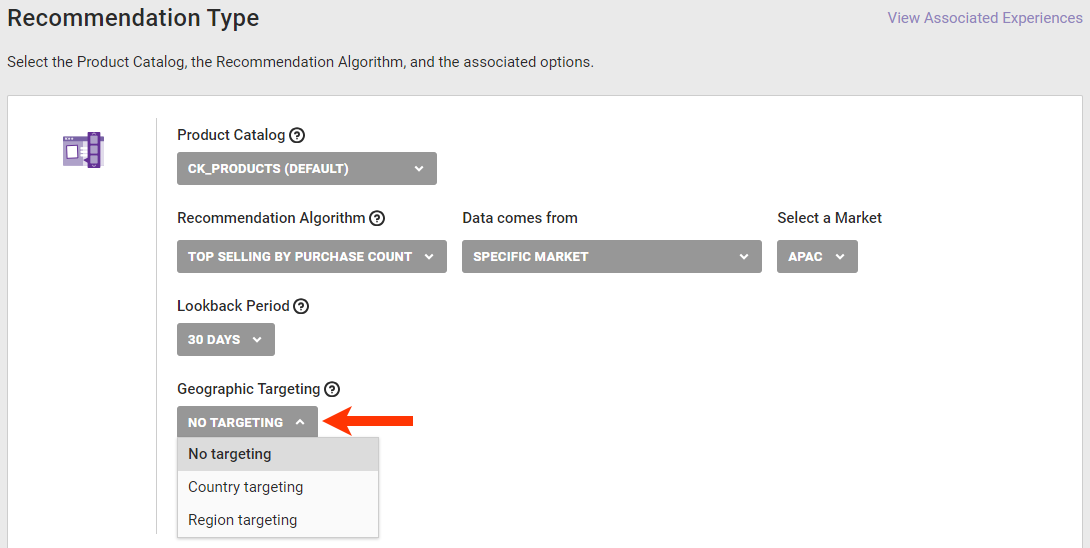
- Optionally, toggle Randomize Results to YES if you want the order in which recommended products appear in the slider to be less systematized. See Product Recommendations Overview for more information about how this setting works.
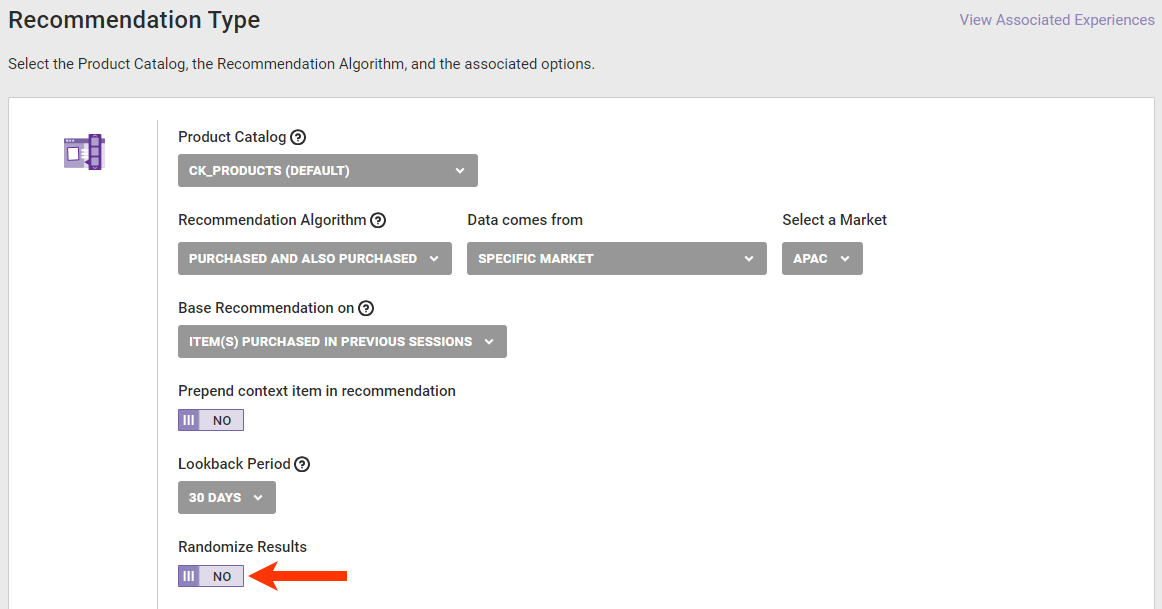
- Optionally, add one or more recommendation filters to further refine the products included in the recommendations. For more information about filtering options and logic, see Filters in Recommendations.
- Click ADD FILTER.
- Select an option from SELECT ATTRIBUTE.
- Complete the filter equation.
- Repeat this step as necessary to add as many recommendation filters as you believe the strategy needs.
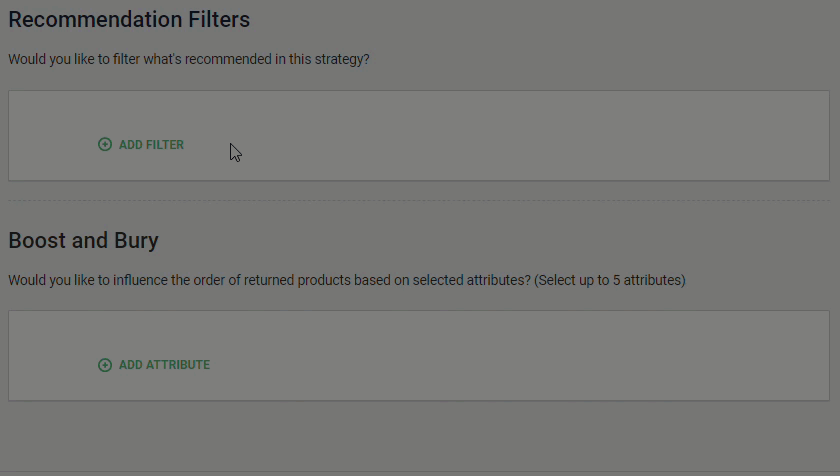
- Optionally, configure up to five Boost and Bury filters to influence if recommended products that meet that filtering criteria are more likely (boost) or less likely (bury) to appear for the customer. See Boost and Bury for more information.

- Click SAVE.

After you save the strategy, you can preview it from the configuration page in certain situations. See Preview a Recommendation Strategy for more information.